Salisbury cathedral
Salisbury's beast of a cathedral with the UK's tallest spire
(Photos/words © urban75, Aug 2007)
The largest and best preserved cathedral in Britain, Salisbury Cathedral attracts over 600,000 visitors every year.
Work begun in 1220, and all but the tower and spire was completed in 1258 - pretty nippy work for those days.
With its 404 foot high spire, Salisbury cathedral can claim to have the tallest spire in the UK, and an old saying claims that the cathedral has as many pillars as there are hours in the year (8,760, in case you're wondering), and as many windows as there are days.
The cathedral library hosts an original copy of one of the most important documents in world history, the Magna Carta, and Salisbury hosts what can claim to be the oldest working mechanical clock in the world, dating back to 1386. It is calculated to have 'ticked' more than 5 million times since it was first built.
There are, however, no hands and no clock face. Instead the clock simply rings a chime of bells every hour and was built to call the bishops to services.

A bevy of surprisingly hip-looking foreign scouts head toward the cathedral.
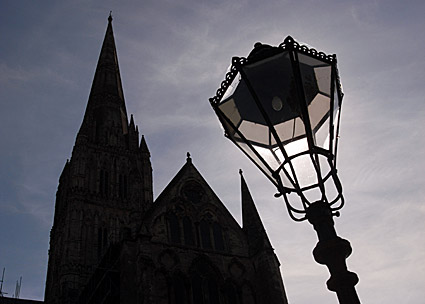
The original cathedral was built at nearby Old Sarum between 1075 and 1092 and rebuilt in c.1120.
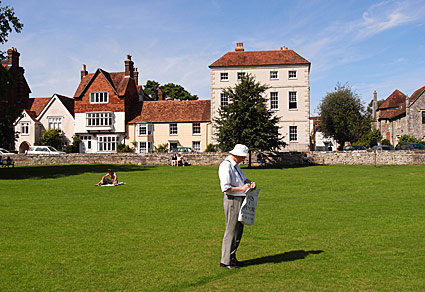
Relaxing on the green around the cathedral.

Old ivy covered house facing the cathedral.

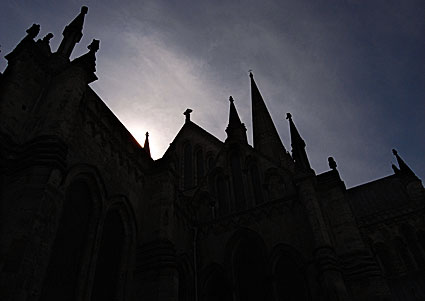
A contre-jour image, as we pretentious photographers like to call them. It simply means, 'against daylight.'
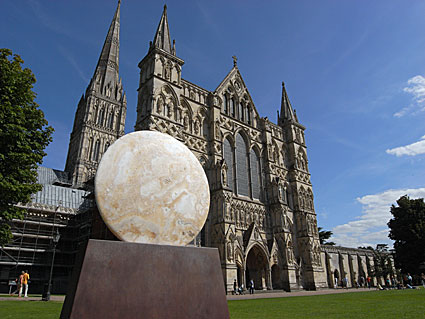
Sitting on the lawn is an onyx disc, grandly called Lunar Disc I, by Emily Young.
The sculpture is made of 'one billion year old, semi translucent onyx' and stands around six feet high on its plinth.
Emily Young sure know how to talk up a storm about her work: "the disc is synonymous in my mind with both the oneness of the universe, of our planet and all who inhabit it, and the unutterable wonder of nature and creation. When the sun shines through it, in the early morning or in the evening, a halo of golden light appears around the edge. It is not an image of man, but an image of the provenance of man.".
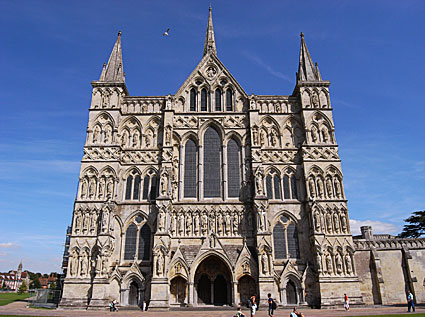
Front of the cathedral. Being built within one century with no substantial later additions, Salisbury is unique amongst medieval English cathedrals.
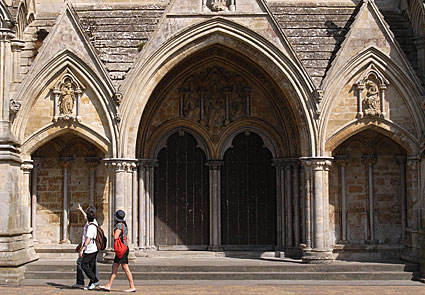
Walking past the entrance.
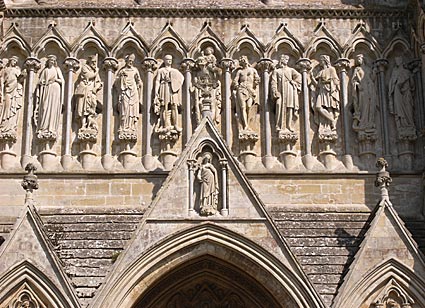
Stone carving detail.

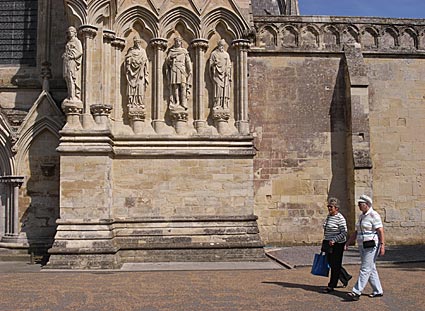
In total, 60,000 tons of Chilmark Stone and 10,000 tons of Purbeck Stone were used to build the Cathedral, with 28,000 tons of oak used to construct the roof, with 420 tons of lead covering 4 acres on the roof.
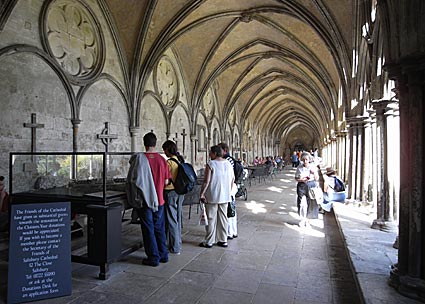
Inside the Cloisters.
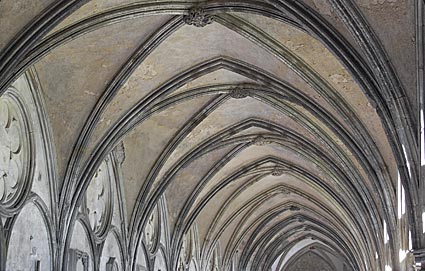
Roof detail. Salisbury can claim Britain's largest cathedral cloisters.

The spire now leans 69.85cm (27.5ins) to the south and 44.44cm (17.5ins) to the west.
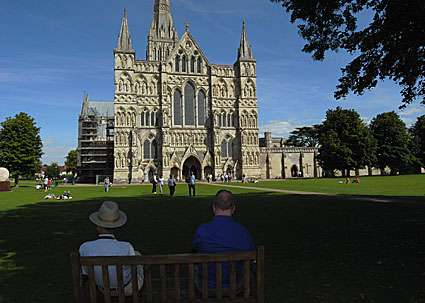
Hanging out by the cathedral...

Cathedral Map
View Larger Map
« Salisbury photos home Salisbury city views 2011 »
|
|

